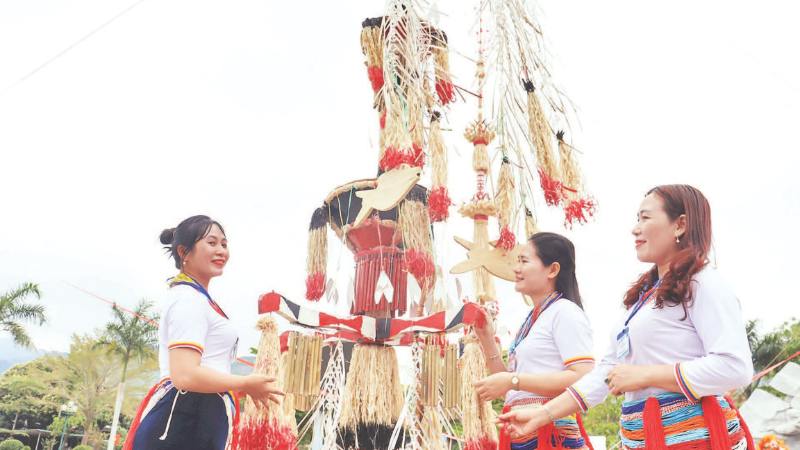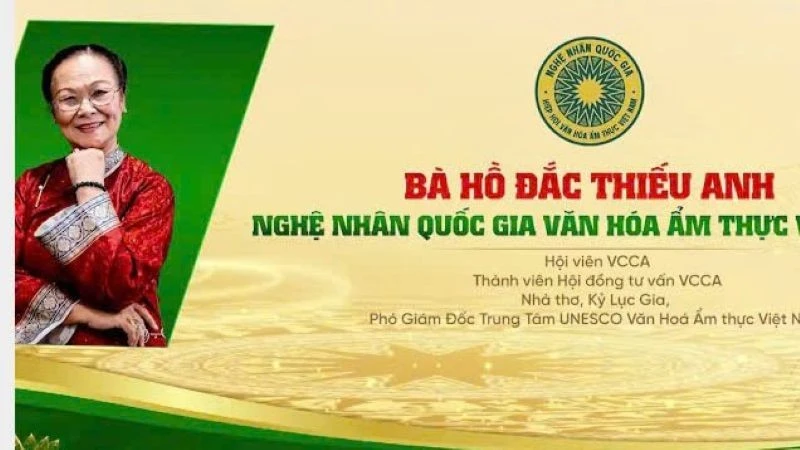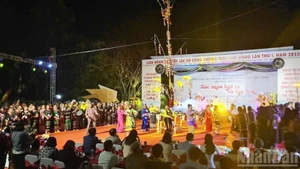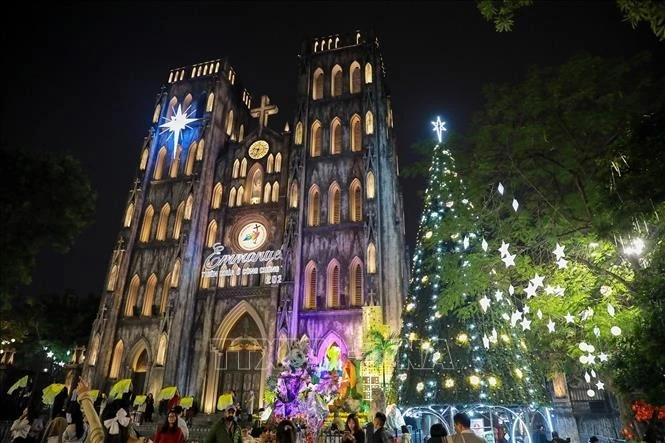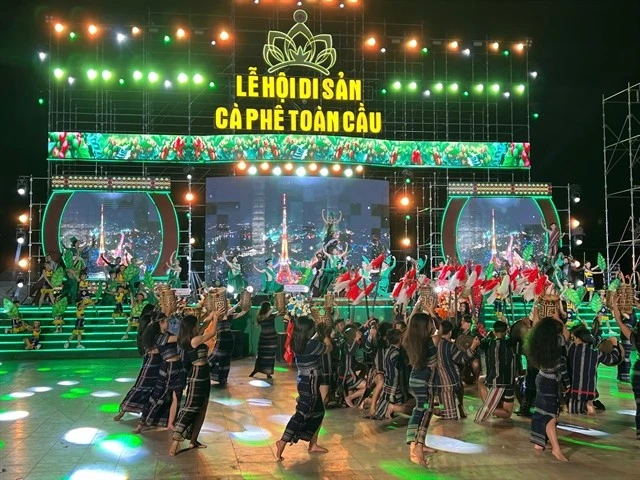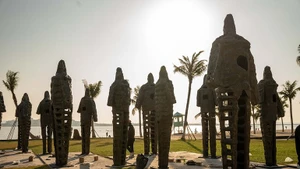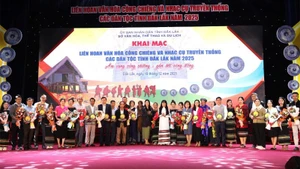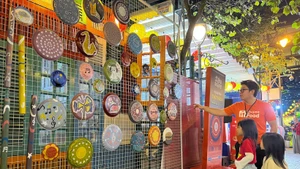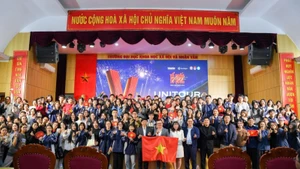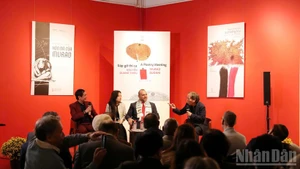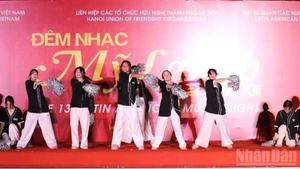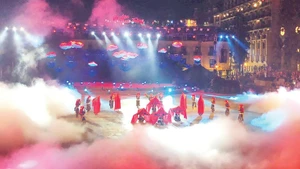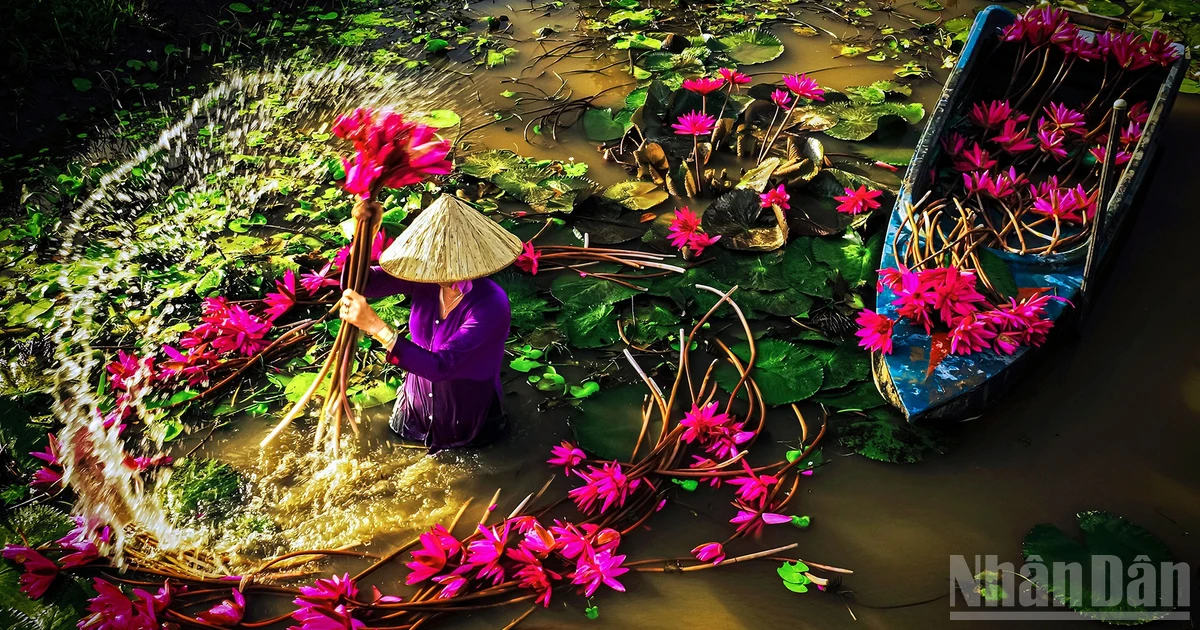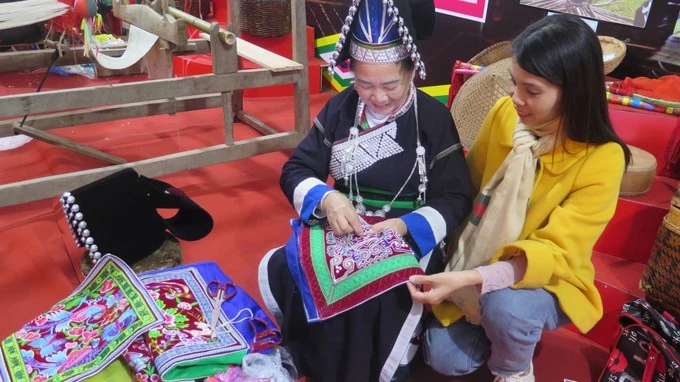These are invaluable core values, contributing to the richness and diversity of the cultural picture of the country’s 54 ethnic groups.
To date, the Co community in Quang Ngai holds four national intangible cultural heritage titles: gong art, Neu tree decoration art, Ca Dao dance art, and the Nga Ra Festival (Sa Ni).
According to folk culture researchers, the most outstanding element in the Co cultural treasure is the Neu tree decoration art (a ritual and festival ornament), considered a masterpiece of unique carving and decoration, a cultural quintessence, and the community’s pride.
People’s Artisan Ho Ngoc An, from Tra Bong Commune, shared that the Co people believe in animism, so there are many rich festivals in their lives, associated with polytheism. Among these, the buffalo sacrifice festival stands out as a major ritual deeply embedded in spiritual life.
A notable example is the Neu phuon tree, an elaborate decorative structure rising 13–15 metres high, composed of three parts: base, body, and top. Along its entire length, the pole is adorned with painted bands of traditional red, black, and white, combined with sacred trays, divine figures, fish offerings, flag leaves, and materials such as bark fibres, cogon grass stems, and bamboo splints. At the top, the Neu features rising leaves and the figure of the drongo bird, symbolising martial spirit and revered as a sacred animal.
“The Neu tree is not only a work of carving art but also carries profound spiritual meaning. For the Co people, the Neu is an indispensable part of life, serving as a bridge between earth and sky, an invisible link between humans and deities, embodying the villagers' aspiration for a better life,” People’s Artisan Ho Ngoc An explained.
Associate Professor, Dr Vo Quang Trong, Vice Chairman of the Viet Nam Folk Arts Association, noted that Co artisans possess artistic souls and a romantic imagination. Their pinnacle of creativity shines in the carving and decoration of the Neu and gubla. This is an invaluable cultural asset that few ethnic groups possess, requiring future generations to uphold, preserve, enrich, and promote.
Beyond their artistic talent in crafting and decoration, the Co are also a community passionate about music and dance, having developed a rich repertoire of folk performance arts preserved and passed down through generations. Alongside folk songs like “ca lu”, “xa ru”, “a gioi”, and “a lat” and the gong-playing art, the Ca Dao dance — a treasured element of the Co’s artistic heritage — emerged during their process of settlement, labour, and development, closely associated with polytheistic beliefs and upland rice cultivation.
Village elder Ho Van Nam, a respected figure in Tra Bong Commune knowledgeable in Ca Dao dance, explained that depending on the area, the Co distinguish two main styles: Ca Dao Duong Nuoc (Waterway Ca Dao) and Ca Dao Duong Rung (Forest Path Ca Dao). Essentially, both share three main movements, but the forest style is characterised by vigorous, quick, decisive steps and strong, lively gong beats, while the waterway style favours gentler, slower, graceful movements, highlighting bodily expression and flexibility.
Over many centuries, alongside the preservation of their distinctive festivals, the Ca Dao folk performing art of the Co people has been inherited and nurtured to this day. Moreover, the Ca Dao dance has contributed meaningful values to community life.
According to surveys by relevant agencies, the Co in western Quang Ngai currently have three People's Artisans, 19 Meritorious Artisans, and nearly 650 folk artisans, who are knowledgeable, skilled, and dedicated to preserving, transmitting, and promoting intangible cultural heritage—forming the core force in safeguarding and sustaining the Co people’s cultural legacy.
To conserve and promote the tangible and intangible cultural heritage of ethnic minorities, Quang Ngai Province has identified this as a critical, urgent and long-term task. Therefore, the provincial People's Committee has directed relevant departments and agencies to focus on implementing preservation and development measures, ensuring that culture serves both as a goal and a driving force for the province’s socio-economic development.
